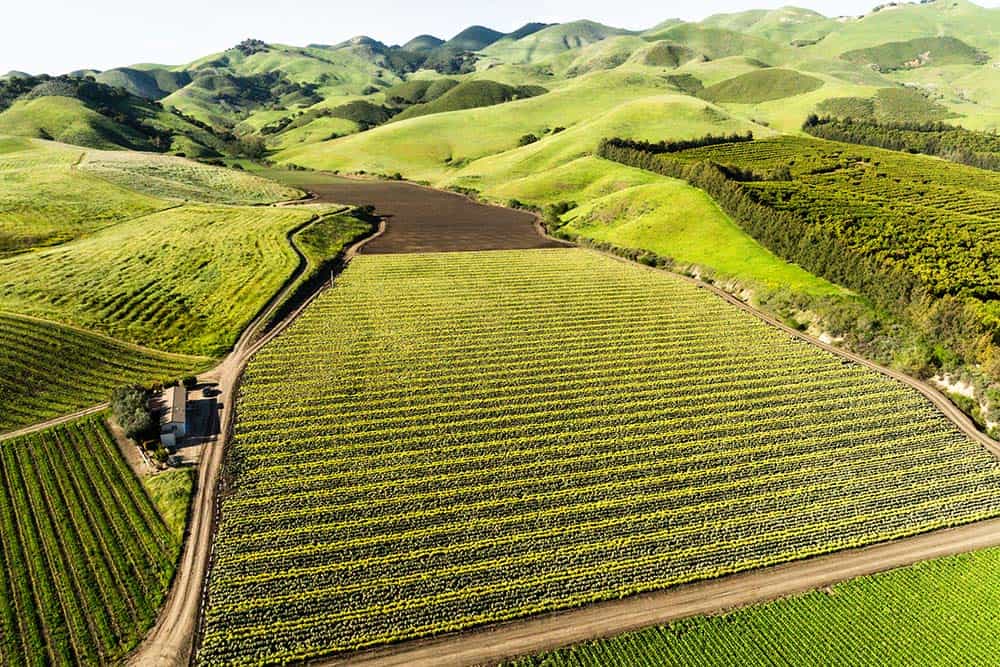San Luis Obispo County: Central Coast Agriculture Meets Artistry
Stretching from oak-dotted hills to windswept coastlines, San Luis Obispo County (or SLO County) is more than just a scenic stop along California’s Highway 1. It is one of the most diverse and vibrant agricultural regions in the state. Here, winegrapes, olive trees, berries, and vegetables grow in harmony alongside a new generation of boutique farms that blend sustainability with innovation. With deep roots, a strong educational backbone, and a community that values connection to the land, SLO County stands as a model of how Central Coast agriculture can nourish both people and place.
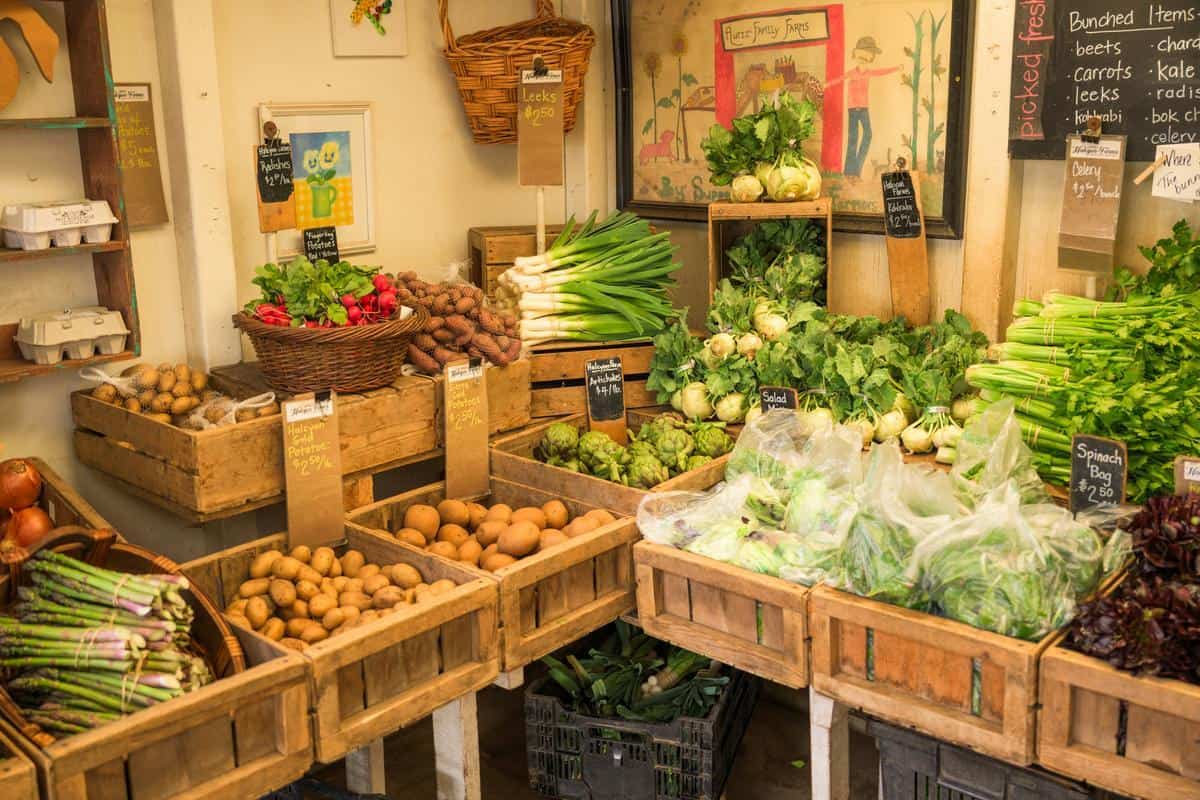
A Legacy of Central Coast Agriculture
Farming in San Luis Obispo County has its roots in the Spanish mission era of the late 18th century. During this period, Mission San Luis Obispo de Tolosa introduced vineyard planting, livestock grazing, and dry-farmed grains to the area. Through the 19th and 20th centuries, agriculture evolved from small homesteads to robust commercial operations—particularly in the inland valleys and coastal terraces.
Today, agriculture remains a cornerstone of the local economy, contributing more than $2.5 billion annually. But it’s not just the big crops—like wine grapes, cattle, and strawberries—that define the region. It’s the diversity, seasonality, and entrepreneurial spirit that make SLO County truly unique.

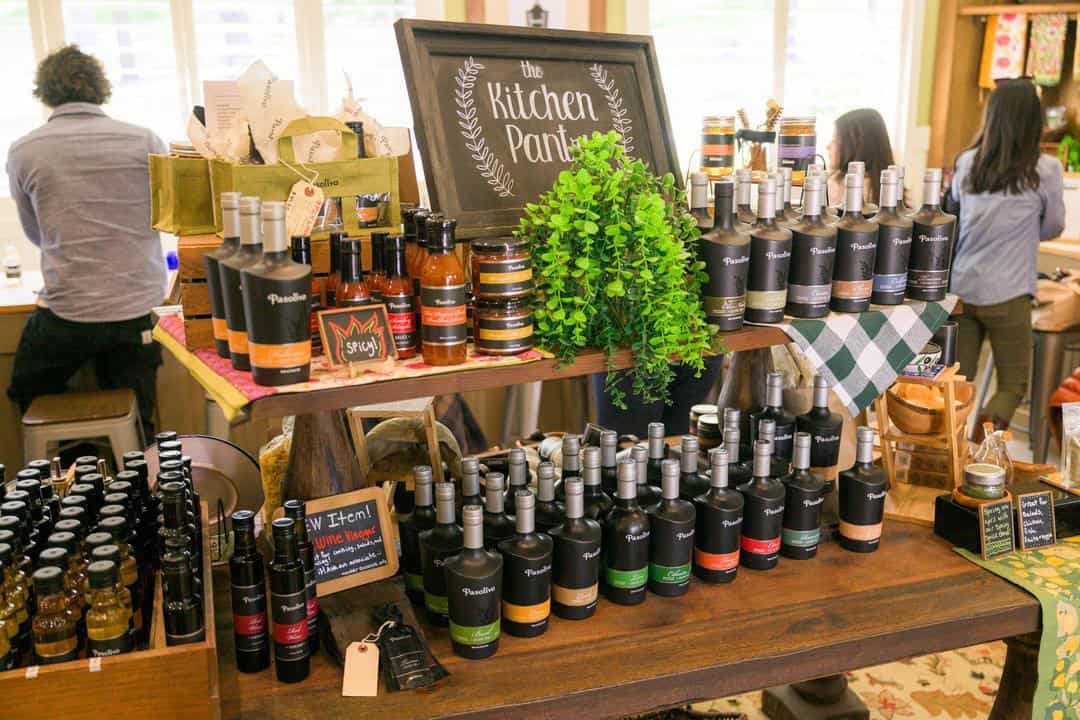

Grapes, Olives, and a Taste of the Region
Wine is perhaps the region’s most iconic crop. The county is home to two federally recognized American Viticultural Areas (AVAs). The first, Paso Robles, is known for bold reds like Syrah, Zinfandel, and Cabernet Sauvignon. The second, Edna Valley, excels in cool-climate varietals such as Chardonnay and Pinot Noir. Dozens of boutique wineries dot the landscape, offering intimate tasting experiences that emphasize terroir and sustainability.
Not far from the vineyards, olive groves thrive in the dry, Mediterranean climate. Local producers, such as Pasolivo and The Groves on 41, press award-winning extra virgin olive oils that reflect the region’s soil and sun. Tasting rooms often sit right next to the trees themselves. Here, guests can sample oils infused with lemon, basil, or even jalapeño.
Boutique Farms and Craft Producers
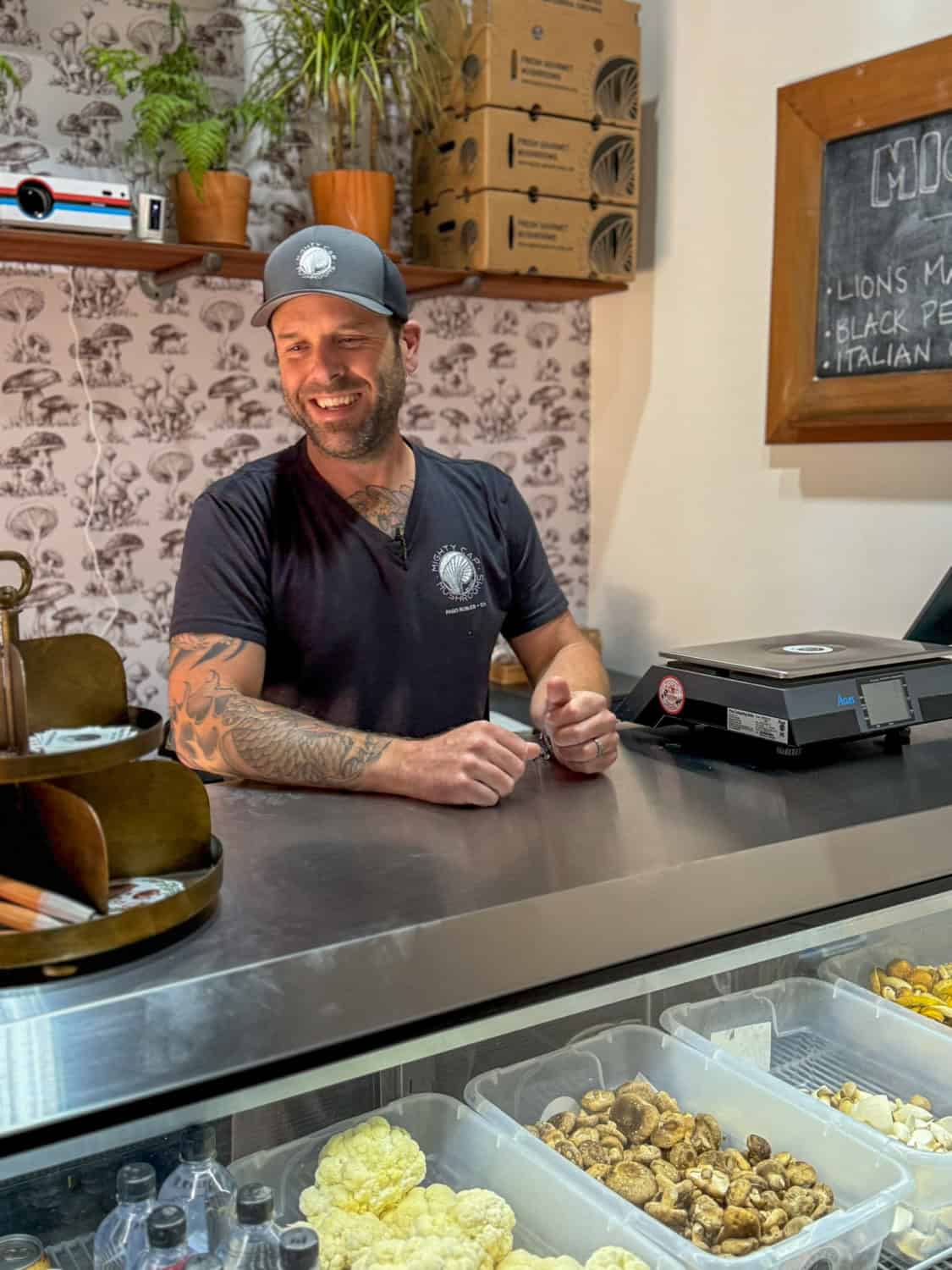
Beyond wine and olives, SLO County has become a haven for small-scale, specialty farms. These embody the modern face of California Grown agriculture. Mighty Cap Mushrooms, for instance, cultivates gourmet varieties like lion’s mane and blue oyster mushrooms. They do so in a controlled environment in Tin City in Paso Robles. Their commitment to sustainability and education is a microcosm of the region’s broader farming ethos.
From microgreens to heirloom grains, goat dairies to flower farms, these boutique operations bring a handcrafted sensibility to the agricultural landscape. Many participate in farmers markets, direct-to-consumer programs, and collaborative events that invite the public to get hands-on with food production.
FarmsteadED: Connecting People to the Land
One of the strongest bridges between farms and consumers is FarmsteadED. This local organization, founded by Lynnette Sonne, promotes agritourism and on-farm education. FarmsteadED curates the SLO County Farm Trail – a collection of farms, ranches, and makers that open their gates to visitors for tours, workshops, and u-pick experiences.
From olive oil pressing demos to lavender distillation and sourdough baking classes, FarmsteadED gives locals and tourists alike a chance to see what Central Coast agriculture is all about. “We learn by doing,” says Sonne, referencing the motto of California State Polytechnic University in San Luis Obispo (also known as Cal Poly or Cal Poly SLO) – a motto that also guides her mission. “And we share that learning with others—whether that’s another farmer or a consumer.”
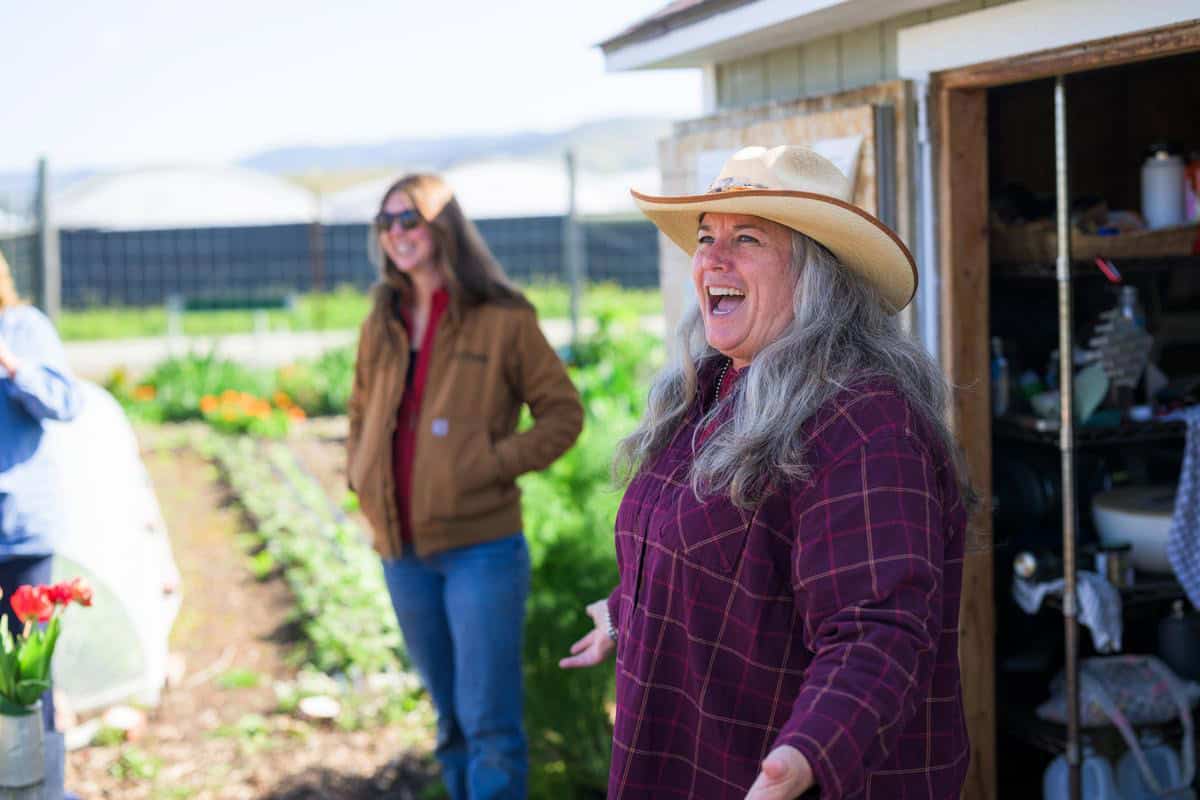
Cal Poly’s Agricultural Influence
No conversation about farming in SLO County would be complete without a nod to Cal Poly SLO. A powerhouse in agricultural education, Cal Poly trains the next generation of growers, winemakers, food scientists, and ag engineers through its “Learn by Doing” philosophy.
Students don’t just study agriculture—they practice it. The Cal Poly Farm, vineyards, and creamery are all student-run. Each supplies local markets, and the vineyard even hosts their own wine label, Cal Poly Wines. The university’s influence ripples through the region, infusing it with research-driven innovation and youthful energy.
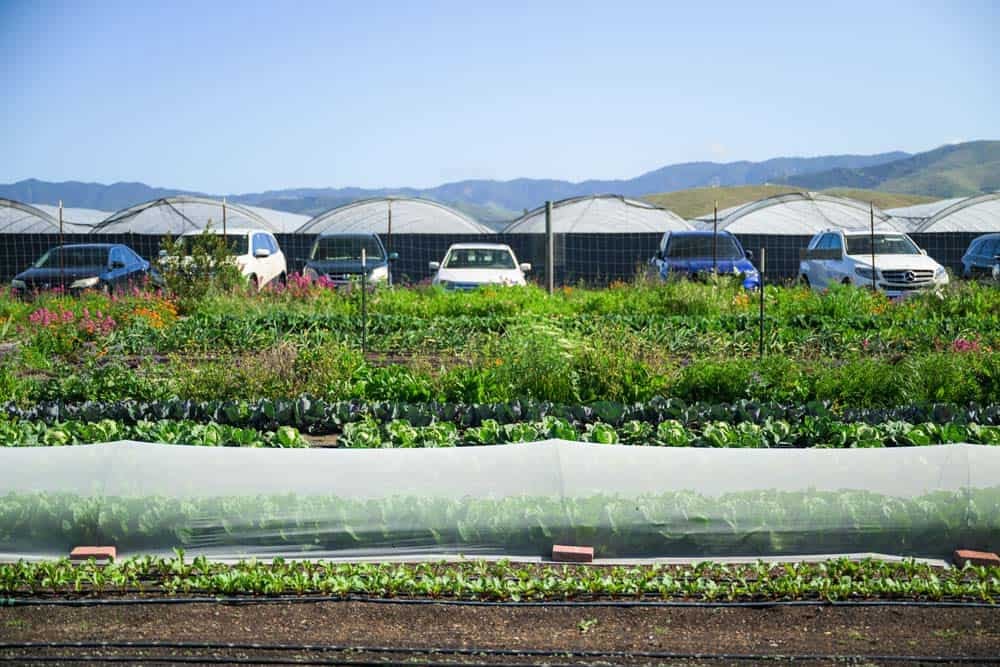
A Living, Growing Community
SLO County’s agricultural story isn’t just one of crops and yields—it’s about connection. From sprawling vineyards to tiny mushroom farms, from Cal Poly labs to u-pick strawberry fields, the region offers a uniquely immersive way to engage with food and farming.
Here, agriculture isn’t a backdrop—it’s a way of life. It’s woven into the landscape, the culture, and the economy. And for visitors and locals alike, that means countless ways to taste, learn, and grow alongside the land.
Looking for a place to stay when visiting SLO?
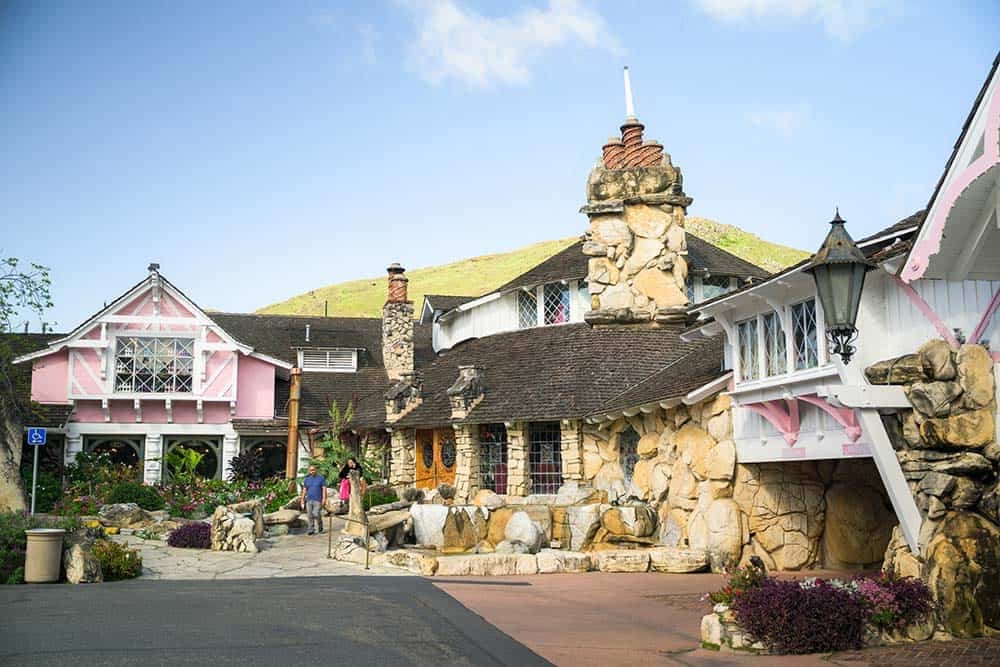
The Madonna Inn in San Luis Obispo is a flamboyant, family-run hotel famous for its wildly themed rooms, pink decor, and kitschy, over-the-top charm. Opened in 1958, it has become a Central Coast landmark known for whimsical architecture, rock waterfall showers, and a lavish bakery.
BE SURE TO SHARE YOUR CALIFORNIA ADVENTURES WITH US BY SNAPPING A PIC AND TAGGING US ON SOCIAL USING #CAGROWN.
Craving more CA GROWN goodness? Follow us on Pinterest for more inspiration for California road trips!
This article was written by Alison Needham, @agirl_defloured, photos by James Collier for California Grown.

